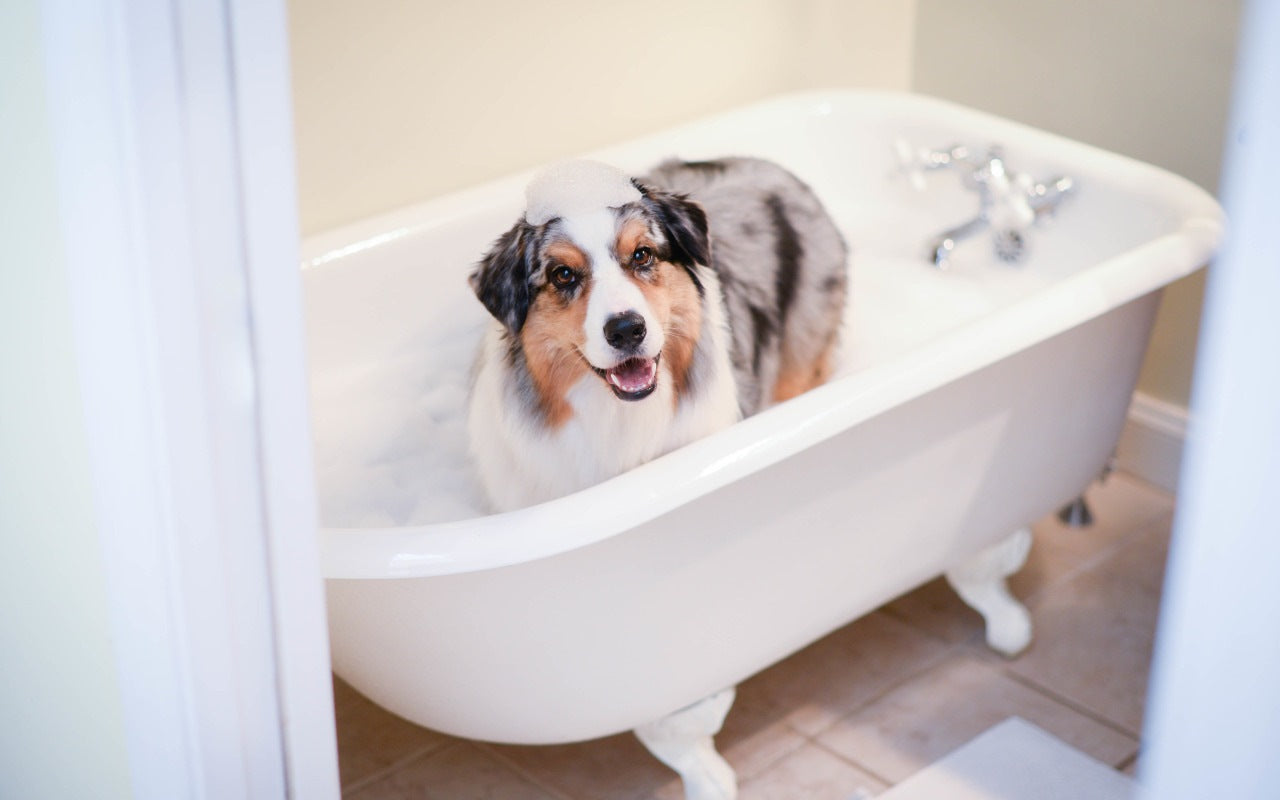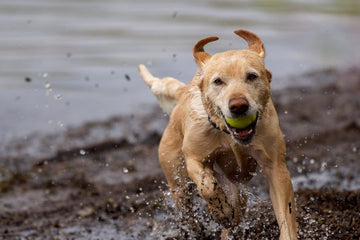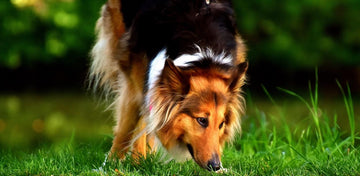
If the hot weather feels unbearable to you, imagine enduring it wrapped in a permanent fur coat. Dogs can’t sweat the way we do—they rely on panting and minimal sweat glands on their paw pads to cool off. This makes summer a precarious time for our four-legged companions, even more so in Florida, where the summer heat is intense.
From July to August, temperatures in Florida typically range between 73° F and 95° F, accompanied by stifling humidity and intense sunlight. These conditions can push even the healthiest dogs toward overheating. For pet owners, this means being more mindful not just of hydration and walks, but also of grooming habits, such as bathing. While it might seem logical to bathe your dog more frequently to keep them cool, the answer isn’t as simple as it seems.
Florida Summer Heat: A Risky Climate for Dogs
Florida isn’t just hot—it’s oppressively humid. The sun’s rays are relentless, and surfaces like pavement and sand retain heat well into the evening. Daily highs often soar above 90°F, and late-day thunderstorms only make it feel steamier.
This makes walking risky. Dogs are low to the ground, where radiant heat is strongest, and their paw pads are vulnerable to burns. As a result, every pet owner in Florida should adjust their routine in the summer—including rethinking when and where their dog spends time outdoors.
Why Most Dogs Struggle in the Heat
Before diving into bathing routines, it’s important to understand why dogs are so vulnerable to hot weather. Most dogs aren’t built for tropical or subtropical climates like Florida. Some breeds and health conditions make dogs more prone to overheating:
-
Brachycephalic or flat-faced breeds like French Bulldogs, Pugs, Shih Tzus, and Boxers have shortened airways that make it harder to breathe and cool down.
-
Overweight dogs and seniors have slower metabolisms and are more prone to fatigue.
-
Dogs with dark or thick double coats absorb more heat and take longer to cool down.
-
Energetic and larger breeds—particularly over 50 kilograms—generate more body heat and exert more energy during activity.
-
Dogs with heart conditions, respiratory issues, or prone to dehydration are especially at risk.
Watch out for signs of heat stress or heatstroke, including excessive panting, drooling, vomiting, bright red gums, weakness, or collapse. If you suspect your dog is overheating, move them to a shaded area, offer cool water—not ice-cold—and call your vet.
So, How Often Should You Bathe Your Dog in Summer?
It may seem sensible to give your dog more baths during warm weather, but frequent bathing isn’t always necessary.
Baths can help remove allergens, dirt, sand, bacteria, and sweat, and may offer some temporary relief from the heat. However, bathing too frequently can backfire by stripping your dog’s coat of its natural oils, resulting in dry, irritated skin.
There are no strict rules for how often to bathe your dog, but here are general guidelines:
-
Most dogs with healthy skin and coats can be bathed every 4–6 weeks.
-
Dogs that enjoy the outdoors, roll in the grass, swim, or get especially dirty may need baths more often.
-
Dogs with allergies or those living with allergic pet owners may benefit from more frequent washing to remove dander.
During summer, more frequent grooming may be needed to remove excess hair and dead skin. If your dog cools off in ponds or muddy areas, a quick rinse with cool water and occasional shampooing—as needed—can help. Short-haired or hairless breeds may require special care, as they’re more prone to sunburn or skin irritation. Use gentle, moisturizing shampoos with oatmeal or aloe vera, and avoid harsh chemicals.
Instead of full baths, try rinsing with cool water after muddy or sweaty outing or using cooling wipes for quick refreshers
How to Keep Dogs Cool in the Summer
Keeping your dog comfortable in hot weather goes far beyond grooming. These tips can help keep your pup cool and safe:
-
Keep dogs indoors between 10 AM and 4 PM, when the heat peaks. Use air conditioning or fans to regulate indoor temperatures.
-
Offer fresh water at all times. Add ice cubes to make it extra refreshing.
-
Provide shaded rest areas or a ventilated dog house outdoors.
-
Use cooling mats, frozen treats, or wet towels for relief.
-
Brush regularly to remove excess fur and prevent matting, which can trap heat.
Dog Walking Tips
-
Walk early in the morning or after sunset.
-
Use the 5-second rule: if the pavement is too hot for your hand, it’s too hot for your dog’s paw pads.
-
Carry cool water and rest in shady spots often.
-
Keep walks short and low-intensity during heatwaves.

Gotta Go Grass: A Cool-Weather Potty Solution
Another easy way to reduce heat exposure is to limit the need for outdoor potty breaks in the middle of the day. Gotta Go Grass offers real dog potty grass with a tray, allowing your dog to do their business safely inside and avoid the hot sun during peak hours.
This is especially useful for:
-
Apartment dwellers with limited access to shaded outdoor space
-
Senior dogs or those recovering from heat stress
-
Puppies in training or pets with sensitive paw pads
-
Pet parents who want to avoid peak-hour sun exposure altogether
By giving your pup a safe, indoor potty option, you can help them stay cool and comfortable all summer long.
Frequently Asked Questions
1. Do dogs need more baths in summer?
Not necessarily. While they may get dirtier, most dogs only need baths every 4-6 weeks unless they’re very active or have allergies.
2. How often should I bathe my dog in the summer?
Usually every 4–6 weeks. Dogs with thick coats, an active outdoor lifestyle, or allergies may require more frequent bathing.
3. Is it okay to bathe my dog every week?
Only if your vet recommends it or your dog gets especially dirty. Weekly baths may cause dry skin.
4. Should I use warm or cold water for baths?
Use lukewarm water, around body temperature. Avoid water that is too hot or too cold.
5. Can I use human shampoo on my dog?
No. Dogs need a shampoo formulated for their skin’s pH balance. Use dog-specific shampoo.
6. Can dogs dry naturally after a bath?
Yes, especially short-haired breeds. Long-haired dogs should be towel- or blow-dried to prevent matting.
Final Thoughts: Comfort and Safety Go Paw-in-Paw
Summer dog care is all about balance and protection. While bathing has its place, overdoing it can do more harm than good. Focus on providing shade, cool water, air conditioning, and an indoor grass pee pad for dogs like Gotta Go Grass to keep them cool and safe.
For more warm-weather tips—and to explore grass pads, plush toys, and treat tumblers that help keep your dog cool, entertained, and mentally stimulated even indoors—visit Gotta Go Grass.




